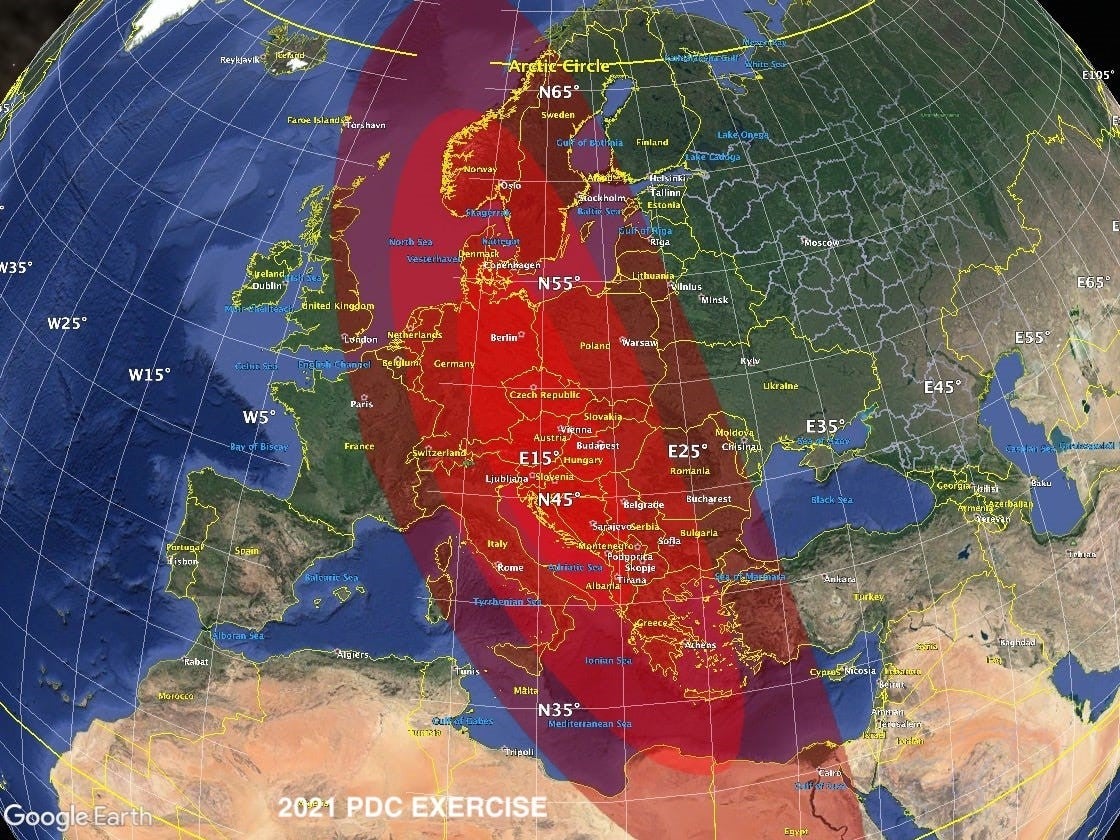Nasa asteroid simulation ends in unavoidable disaster for Earth
SpaceX boss Elon Musk says failed exercise proves ‘we need larger and more advanced rockets’
Your support helps us to tell the story
From reproductive rights to climate change to Big Tech, The Independent is on the ground when the story is developing. Whether it's investigating the financials of Elon Musk's pro-Trump PAC or producing our latest documentary, 'The A Word', which shines a light on the American women fighting for reproductive rights, we know how important it is to parse out the facts from the messaging.
At such a critical moment in US history, we need reporters on the ground. Your donation allows us to keep sending journalists to speak to both sides of the story.
The Independent is trusted by Americans across the entire political spectrum. And unlike many other quality news outlets, we choose not to lock Americans out of our reporting and analysis with paywalls. We believe quality journalism should be available to everyone, paid for by those who can afford it.
Your support makes all the difference.There is currently no technology on Earth that could stop a massive asteroid from wiping out Europe, according to a simulations carried out by leading space agencies.
The week-long exercise led by Nasa concluded that catastrophe would be unavoidable, even given six months to prepare.
The hypothetical impact scenario, which took place during a planetary defence conference hosted by the United Nations, proved that governments are woefully unprepared for this kind of disaster.
“If confronted with the scenario in real life, we would not be able to launch any spacecraft on such short notice with current capabilities,” the participants said.
The only response to such an event would be to evacuate the area before the asteroid hit, however the impact zone was across large parts of North Africa and Europe.

“Each time we participate in exercises of this nature, we learn more about who the key players are in a disaster event, and who needs to know what information and when,” said Lindley Johnson, Nasa’s Planetary Defense Officer.
“These exercises ultimately help the planetary defence community communicate with each other and with our governments to ensure we are all coordinated should a potential impact threat be identified in the future.”
Responding to the news of the failure, SpaceX boss Elon Musk said the lack of solution was “one of many reasons why we need larger and more advanced rockets”.
SpaceX recently secured a $2.89 billion contract with Nasa to develop its next-generation Starship spacecraft, which is being built to transport people and cargo around the Solar System.
>> Follow The Independent’s live coverage of latest Starship SN15 flight test <<
Combined with its Super Heavy rocket Booster, SpaceX claims Starship will be “the world’s most powerful launch vehicle ever developed”, and could theoretically be used to assist missions designed to divert the path of an Earth-bound asteroid.
Nasa is already working on asteroid deflection technology and is planning a launch its first test mission of its Double Asteroid Redirection Test (DART) system in late 2021 before reaching the asteroid Dimorphos in autumn 2022.
The mission will attempt to change the orbit of the asteroid and hopefully offer prove that such a mitigation strategy could work on dangerous near-Earth objects (NEO) in the future.
“DART will be the first test for planetary defence, and the data returned after it impacts Dimorphos will help scientists better understand one way we might mitigate a potentially hazardous NEO discovered in the future,” said Andrea Riley, program executive for DART at Nasa.
“While the asteroid DART impacts poses no threat to Earth, it is in a perfect location for us to perform this test of the technology before it may actually be needed.”
Nasa is currently tracking roughly 25,000 NEOs and new discoveries are being added at a rate of around 30 each week.

Join our commenting forum
Join thought-provoking conversations, follow other Independent readers and see their replies
Comments